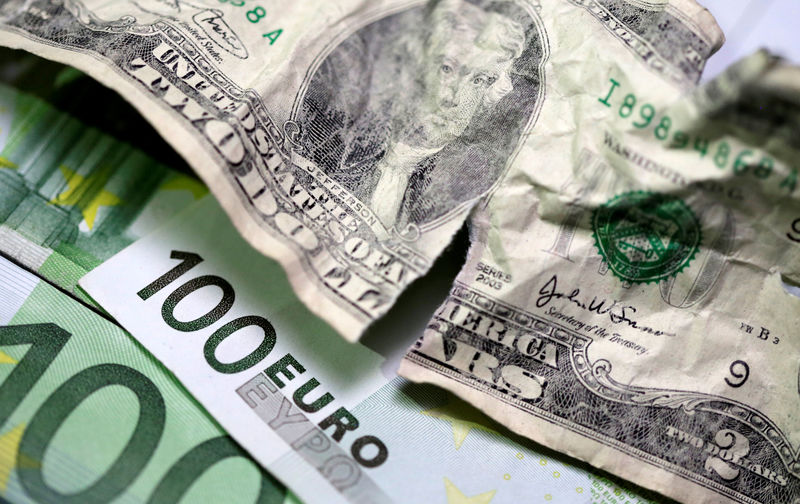Investing.com – The US dollar rose on Monday, climbing away from last week’s one-year low, while disappointing economic activity data weighed on the euro.
At 04:15 ET (08:15 GMT), the Dollar Index, which tracks the greenback against a basket of six other currencies, was trading 0.5% higher at 100.925, just above a 12-month low.
Dollar looks forward to PCE release
The US dollar has recovered to some extent from the sell-off in the wake of last week’s big interest rate cut, with traders now appearing to write off the chance of a US recession.
“So far, investors have bought into Chairman Jerome Powell’s soft landing story last week,” ING analysts said in a note. “And instead of the 50 basis point rate cut frightening equity markets, major benchmarks have continued to rise.”
That said, Fed futures traders are now pricing in 75 basis points of rate cuts by the end of this year, and nearly 200 basis points of rate cuts by December 2025, according to CME FedWatch.
The most important economic data for this week will be released on Friday, in the form of the Fed’s preferred inflation gauge.
Analysts expect a 0.2% month-over-month increase, bringing the annual pace to 2.7%, while the overall index would slow to just 2.3%.
“A core PCE of 0.1% on Friday could potentially trigger a new decline in US yields and the dollar,” ING said.
Euro hit by PMI data
In Europe, trading was 0.5% lower at 1.1111 after data showed German business activity shrank at the sharpest pace in seven months in September, suggesting Europe’s largest economy has entered a recession.
The , compiled by S&P Global, fell to 47.2 from 48.4 in August, below the forecast of 48.2.
The rate cut for the second time this year earlier this month last week, and further signs of economic weakness could increase the chances of another rate cut in October.
“This is not a great environment for the euro, nor for the EUR/USD to rise above the major resistance at 1.12. Further EUR/USD consolidation in a range of 1.11-1.12 seems likely, with downside risks early this week,” ING said.
fell 0.4% to 1.3264, giving back some of the pair’s recent gains after hitting its highest level since March 2022 last week.
The ECB kept its key interest rate at 5% on Thursday, after starting easing in August with a 25 basis point cut.
“There is a feeling that a long position in the British pound is quite extreme,” ING said. “Yet the latest CFTC data published last Friday, covering activity up to last Tuesday (September 17), actually showed quite a large reduction in longs in pounds from the speculative community.”
The yuan falls slightly after the PBOC cut
traded 0.1% higher at 7.0595, with the yuan falling after the People’s Bank of China cut its 14-day repo rate to further ease monetary conditions and support economic growth.
fell 0.1% to 143.72, with regional trading volumes subdued due to a Japanese market holiday, although the yen remains close to its strongest levels for 2024.
Interest rates were held steady last week on expectations that inflation and economic growth would rise steadily.


